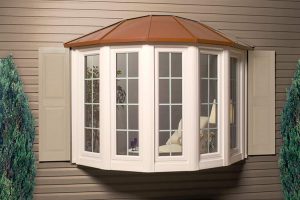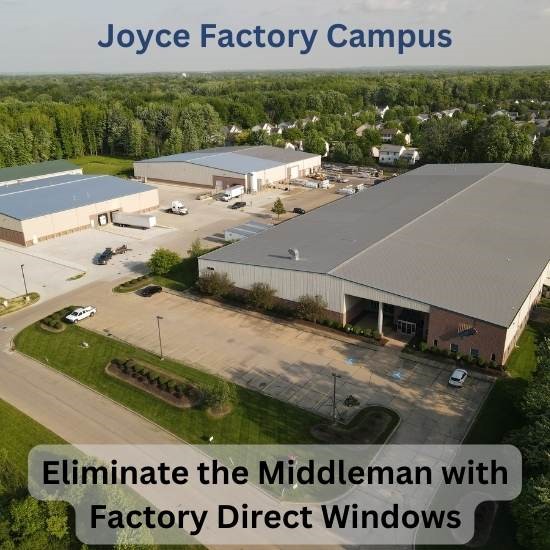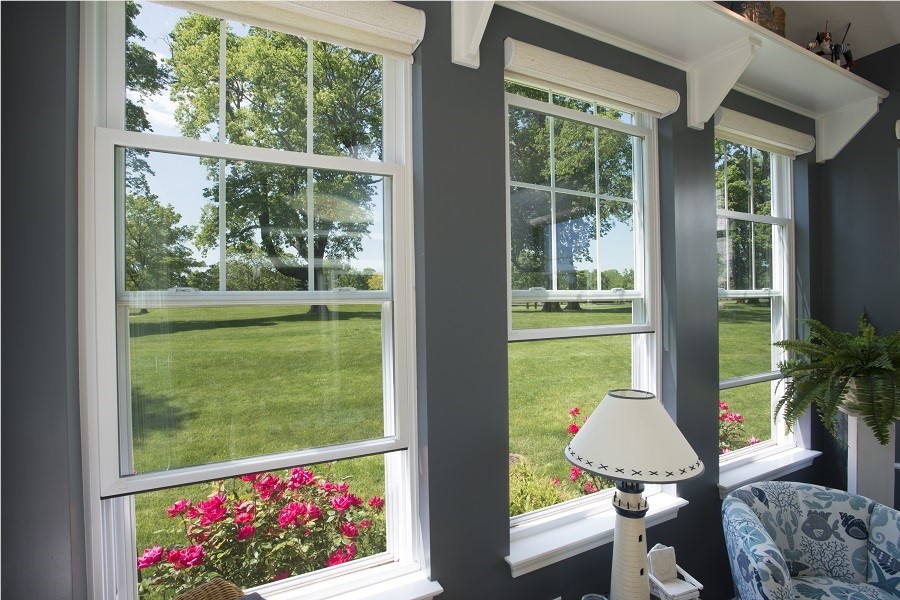Bay and bow windows are combination windows that protrude outward from the home. Both windows can add character, natural light and open any room. They also commonly give great external views from inside due to the large amounts of glass. Since both windows extend beyond the exterior house wall, they require a small roof above the window or must be under the existing soffit overhang to be protected from rain, snow and other elements. Let’s explore the differences of a bay window vs bow window, and which one you should choose for your home. You need to understand each window, their differences and benefits to make the right selection. 
Definition A bay window is an angled window that protrudes from the external surface of your home, and has a minimum of three windows. Typically a bay window features a fixed picture window in the middle with two operating flanking windows angled relative to the house wall and picture window. The operating flanking windows are usually casements or double hungs.
 Bay Window
Bay Window
A bow window is basically a variation of the bay but the windows follow a sweeping arc pattern. Bow windows usually consist of a series of 4-6 casement and picture windows placed together at the same relative angles to each other to produce a curved appearance.
 Bow Window
Bow Window
Cost Difference
Relatively the cost difference between a bay and bow window is not dramatic. Typically bow windows tend to fit better in larger openings and hence the bow windows have a higher average cost. Bow windows also have more actual windows inside of the opening (bay window has 3 vs. 4-6+ for a bow window). These multiple additional units also increase the cost of a bow over a bay window. However, a bay window frame can protrude much farther than a normal curved bow window. Sometimes, a bay window can be more expensive than a bow window due to the size of the new shell frame. A large amount of cost is in the custom built insulated shell typically constructed from high quality grade lumber and timberstrands. If a new roof is needed above the bay/bow window, this can add to the cost as well. New interior casing trim is also usually required when replacing the entire bay or bow window unit. One quick note on finishing, make sure you choose a bay or bow window edge banding so that the edge of the bay or bow frame will be able to be stained to match the casing trim. Without edge banding, you will be left trying to stain the cut end of a thick plywood seat.Size and Purpose of Window
Many times a home’s architecture will dictate whether you should purchase a bow or bay window. Sometimes, the size of the opening can influence the decision as well. Wider openings (over 7’) are usually better choice for a bow window than a bay because a bow window can use more than 3 windows to split up the size of the width. Furthermore, the purpose of the new window can also affect what window you should choose. If you want a large seat for a “window seat” look or functionality, then a bay window is your best choice. If you want a sleeker, uniform curved appearance I a large opening, then a bow window will work best.Ventilation Needs
Only end vents open in a bay window, however all or some can typically open in bow windows. There are 4-6+ windows in a bow window. The design of bow windows using casement windows at the same size for uniform appearance normally means that the actual width of each window is smaller than in a similar size bay unit. Hence, the ventiliation is actually quite similar between a bay vs a bow because a bay has two larger flanking operating windows where a bow window could have 2-6+ operating windows (but there is more framing on a bow window). If you decide to install a bow window and want to be able to open more of the panes it is normally more expensive due to the additional hardware and type of window. This is something you need to keep in mind when choosing which style would be best for your purposes.Depth of Window
Bay windows typically protrude farther from the house, but not always. This can vary from 25° to 45° for a bay window vs set angles for bow window. As a bay window protrudes further out from the home they often add more floor space to display a special piece of furniture or artwork. The large bay window could also be used for a comfortable window seating arrangement where you could unwind with a mug of hot chocolate and a book. Both types of windows can be suitable for adding boxed window seats as an interior design feature.If you have any additional questions regarding windows, please do not hesitate to contact us or comment below!

Tags
Subscribe to Joyce's Blog







Comments